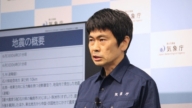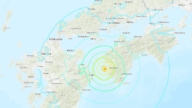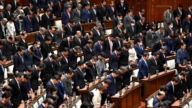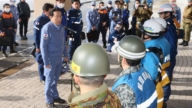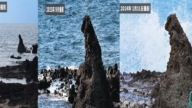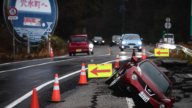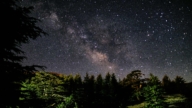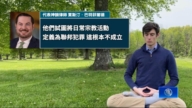当地时间11号下午2点46分左右日本发生8.9级地震,震中位于宫城县以东,太平洋海域,震源深度10公里,日本地震导致千叶县一家炼油厂着火,现场一片火海。(画面是电视台英语报导)
Flames continue to engulf an oil refinery plant in Ichihara, Chiba prefecture Japan on Friday night (March 11) after the country’s biggest earthquake since records began 140 years ago.
Fire engulfed a large waterfront area in the northeast, TV footage taken from a military plane showed.
In Kesennuma city in Miyagi prefecture, near Sendai city, houses and other buildings were ablaze across large swathes of land, public broadcaster NHK showed. The city, with a population of 74,000, has residential, light industry and fishing areas.
The magnitude 8.9 quake, the most powerful since Japan started keeping records nearly a century and a half ago, split highways, flattened buildings and ignited fires all over the northeastern Pacific coast.
A torrent of water up to 10 metres high, thick with the debris of the homes and cars it swept away in its path, submerged farmland near the coastal city of Sendai, where local media reported up to 300 people had drowned.
Television images showed upended cars bobbing up and down in what had become an inland sea. Boats, listing out of control, smashed into bridges and submerged homes.
A lot of the coastline in the far north, where the worst damage was, is composed of long, thin curving bays that have traditionally intensified tsunami.
Around 4.4 million homes were without power in northern Japan, media said.
There were several strong aftershocks. In Tokyo, buildings shook violently.
The quake was the biggest since records began 140 years ago, the Japan Meteorological Agency said. It surpasses the Great Kanto quake of Sept. 1, 1923, which had a magnitude of 7.9 and killed more than 140,000 people in the Tokyo area.
Earthquakes are common in Japan, one of the world’s most seismically active areas. The country accounts for about 20 percent of the world’s earthquakes of magnitude 6 or greater.


